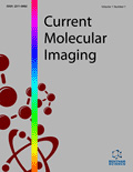Abstract
Vascular thrombosis is a crucial event and still cause of significant morbidity and mortality worldwide. Deep vein thrombosis with subsequent pulmonary embolism constitutes a frequent clinical event, while reliable detection, especially of small or old thrombi, still remains clinically challenging. Occlusion or thromboembolism in an arterial vessel may result in myocardial infarction or stroke, and early detection would be of enormous clinical interest. Noninvasive molecular imaging techniques, particularly targeting key structures of developing or established thrombosis, have demonstrated its ability to detect this pathology in different models of disease, and current research is heading towards clinical translation. In this article, recent developments and challenges of molecular imaging of vascular thrombosis involving magnetic resonance imaging, ultrasound and nuclear imaging techniques are reviewed.
Keywords: Atherothrombosis, deep vein thrombosis, fibrin, Molecular imaging, MRI, nuclear imaging, platelets, pulmonary embolism, ultrasound.
 38
38

